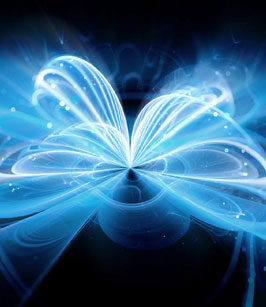Engineering Materials For
Manufacturing Applications
Magnetic Materials
Ferromagnetic materials are divided into two categories:
- Soft Magnetic Materials
- Easy to magnetise and demagnetise
- Commonly used for making temporary magnets
- Hard Magnetic Materials
- Materials that retain their magnetism even after the removal of the applied magnetic field and are difficult to demagnetise
- Used for making permanent magnets
- Made from Rare Earth Metals, Aluminium Nickel Cobalt (AlNiCo) Alloys and Ferrites
Typical Ferromagnetic Materials include:
- Neodymium Iron Boron (NdFeB) Magnets
- Strongest Permanent Magnet
- High Energy Product
- High Coercive Force
- Aluminium Cobalt Nickel (AlNiCo) Magnets
- Good Temperature Stability
- Good Resistance to Demagnetisation
- High Residual Induction
- High Energy
- Samarium Cobalt (SmCo) Magnets
- High Magnetic Properties
- Excellent Thermal Stability
- High Resistance to Corrosion and Oxidation
- Ferrite Magnets (Iron Oxide + Strontium Carbonate)
- Also Known as Ceramic Magnets
- Most Commonly used Permanent Magnets
- Excellent Corrosion and Demagnetisation Resistance Properties
As such, the properties of these magnets allow them to be used in the Electronic, Medical and Automotive Industries.
Magnetic Materials shapes consist of Disc, Ring, Rectangle, Bar, Cylinder, Plate & Custom-shaped.

Neodymium Iron Boron (NdFeB) Magnets
Sintered Neodymium Iron Boron NdFeB Magnets
Plated Ni-Cu-Ni Grades
|
Grade | Residual Induction Br mT | Energy Product BH Max MGsOe |
| 30 – 40 | 1080 – 1280 | 223 – 326 |
| 42 – 52 | 1280 – 1480 | 318 – 422 |
| 30M – 40M | 1080 – 1280 | 223 – 326 |
| 42M – 50M | 1280 – 1450 | 318 – 406 |
| 30H – 38H | 1080 – 1250 | 223 – 310 |
| 40H – 48H | 1250 – 1430 | 302 – 390 |
| 30S – 38S | 1080 – 1250 | 223 – 310 |
| 40S – 45S | 1240 – 1380 | 318 – 366 |
| 28U – 33U | 1020 – 1170 | 207 – 271 |
| 35U – 40U | 1180 – 1280 | 263 – 326 |
| 28E – 38E | 1040 – 1250 | 207 – 310 |
| 28A – 33A | 1110 – 1170 | 199 – 271 |
Sintered Neodymium Iron Boron NdFeB Magnet Properties
|
Physical Properties | Unit | Results |
| Curie Temperature | °C | 310 – 380 |
| MAX Operating Temperature | °C | 80 – 230 |
| Hardness | Hv | 620 |
| Electrical Resistivity | Ω.cm | 1.8 x 10-4 – 2.0 x 10-4 |
| Density | g/cm3 | 7.45 – 7.65 |
| Recoil Permeability | – | ≥ 30 |
| Magnetization Field Strength | Koe / KA / m | ≥ 2400 |
| Bending Strength | MPa | 295 – 345 |
| Temp. Coefficient of Br | % / °C | -0.1 – -0.2 |
| Temp. Coefficient of Hcj | % / °C | -0.5 – -0.7 |
Aluminium Nickel Cobalt (AlNiCo) Magnets
Aluminium Nickel Cobalt AlNico Magnet Grades |
Grades | Residual Induction Br
mT
| Density
g/cm3
| Remark |
| ANC 1 | 720 | 6.9 | Isotropic |
| ANC 2 | 750 | 7.1 |
| ANC 3 | 700 | 6.9 |
| ANC 5 | 1280 | 7.3 | Anisotropic |
| ANC 5D | 1330 | 7.3 |
| ANC 5E | 1350 | 7.3 |
| ANC 6 | 1050 | 7.3 |
| ANC 8 | 820 | 7.3 |
| ANC 8H | 720 | 7.3 |
| ANC 9 | 1060 | 7.3 |
Sintered Aluminum Nickel Cobalt AlNico Magnet Grades |
Grades | Residual Induction Br
mT
| Density
g/cm3
| Remark |
| ANC 2S | 710 | 6.9 | Isotropic |
| ANC 5S | 1090 | 7.3 | Anisotropic |
| ANC 6S | 940 | 7.3 |
| ANC 8S | 940 | 7.3 |
| ANC 8SH | 670 | 7.3 |
Samarium Cobalt (SmCo) Magnets
Injection Moulded Samarium Cobalt SmCo Magnet Grades |
Material | Grade | Energy Product BH max
MGsOe
| Residual Induction Br min – max
kGs
| Density
g/cm3
| Temperature Coefficient
%/°C
|
Curie Temperature
°C
| Max Woking Temperature
°C
|
| SC5 | 16H | 15 – 18 | 7.7 – 8.6 | 8.3 | -0.04 | ≥ 740 | 250 |
| 18H | 17 – 20 | 8.1 – 9.2 |
| 20H | 19 – 22 | 8.5 – 9.5 |
| 22H | 21 – 24 | 8.9 – 10 |
| S2C17 | 24HM | 22 – 25 | 9.2 – 10.4 | 8.4 | -0.03 | ≥ 850 | 350 |
| 26HM | 24 – 27 | 10 – 10.6 |
| 28HM | 26 – 29 | 10.4 – 11 |
| 30HM | 28 – 31 | 10.7 – 11.2 |
| 32M | 29 – 32 | 10.9 – 11.5 |
| Low CTE S2C17 | 22L | 20 – 23 | 9.0 – 9.9 | 8.4 | -0.015 | ≥ 850 | 350 |
| 24L | 22 – 25 | 9.2 – 10.2 |
Ferrite Magnets (Iron Oxide + Strontium Carbonate)
Sintered Ferrite Magnet Grades
|
Grade | Residual Induction Br
kGs | Energy Product BH max
MGsOe |
| 10T | 2.0 – 2.35 | 0.80 – 1.20 |
| 20 – 28 | 2.2 – 4.0 | 1.06 – 3.50 |
| 22H – 27H | 3.1 – 4.0 | 2.50 – 3.70 |
| 32 –38 | 3.8 – 4.5 | 3.52 – 4.80 |
| 30H – 33H | 3.8 – 4.3 | 3.45 – 4.52 |
| 40 – 49 | 3.8 – 4.3 | 3.30 – 4.20 |


